Test Bank for International Business: The New Realities, 3/E 3rd Edition S. Tamer Cavusgil, Gary Knight, John Riesenberger
$38.00
ISBN-10: 0133254208
ISBN-13: 9780133254204
For courses in International Business.
An innovative teaching and learning system that captures the spirit of International Business.
Based on the authors’ collective teaching and working experience–as well as discussions with hundreds of practitioners, students, and faculty–International Business: The New Realities is a complete teaching and learning system that seamlessly integrates cases, exercises, and videos.
The Third Edition has been completely revised and continues to reflect the new realities of today’s international business environment for tomorrow’s managers.
- Description
- Reviews (0)
Description
You will receive this product immediate after placing the order
International Business: The New Realities, 3e (Cavusgil)
Chapter 1 Introduction: What Is International Business?
1) International business is primarily carried out by individual companies.
Answer: TRUE
Difficulty: Easy
Skill: Concept
Objective: 1-1
AACSB: Dynamics of the global economy
2) The globalization of markets refers to the growing independence and self-sufficiency of
countries worldwide.
Answer: FALSE
Difficulty: Easy
Skill: Concept
Objective: 1-1
AACSB: Dynamics of the global economy
3) International business today is predominantly the domain of large, multinational companies.
Answer: FALSE
Difficulty: Easy
Skill: Concept
Objective: 1-4
AACSB: Dynamics of the global economy
4) Exporting is an entry strategy involving the sale of products or services to customers located
abroad.
Answer: TRUE
Difficulty: Easy
Skill: Concept
Objective: 1-2
AACSB: Dynamics of the global economy
5) A country’s economic assets are also known as factors of production.
Answer: TRUE
Difficulty: Easy
Skill: Concept
Objective: 1-2
AACSB: Dynamics of the global economy
6) The two primary types of international investment are portfolio investment and foreign direct
investment.
Answer: TRUE
Difficulty: Easy
Skill: Concept
Objective: 1-2
AACSB: Dynamics of the global economy
2
7) Over the last few decades, export activity by nations has grown more quickly than has
domestic production.
Answer: TRUE
Difficulty: Easy
Skill: Concept
Objective: 1-2
AACSB: Dynamics of the global economy
8) In the past, international trade and investment activities were mainly conducted by companies
that sold services.
Answer: FALSE
Difficulty: Easy
Skill: Concept
Objective: 1-1
AACSB: Dynamics of the global economy
9) Services are the fastest growing sector in international trade.
Answer: TRUE
Difficulty: Easy
Skill: Concept
Objective: 1-2
AACSB: Dynamics of the global economy
10) The level of government intervention in commercial activities is similar across most
countries.
Answer: FALSE
Difficulty: Easy
Skill: Concept
Objective: 1-3
AACSB: Dynamics of the global economy
11) Currency risk refers to the risk posed by adverse fluctuations in exchange rates.
Answer: TRUE
Difficulty: Easy
Skill: Concept
Objective: 1-3
AACSB: Dynamics of the global economy
12) For internationalizing firms, the consequences of poor business management decisions are
usually more costly when mistakes occur abroad than when they occur at home.
Answer: TRUE
Difficulty: Easy
Skill: Concept
Objective: 1-3
AACSB: Dynamics of the global economy
3
13) MNEs with extensive international operations tend to focus mainly on downstream activities
such as marketing in foreign countries.
Answer: FALSE
Difficulty: Easy
Skill: Concept
Objective: 1-4
AACSB: Dynamics of the global economy
14) International business is primarily the domain of large, resourceful firms.
Answer: FALSE
Difficulty: Easy
Skill: Concept
Objective: 1-4
AACSB: Dynamics of the global economy
15) Exporting is the most common foreign market entry strategy of the SME.
Answer: TRUE
Difficulty: Easy
Skill: Concept
Objective: 1-4
AACSB: Dynamics of the global economy
16) For manufacturing companies, on a per-unit-of-output basis, high volumes of production are
correlated with lower per-unit cost.
Answer: TRUE
Difficulty: Easy
Skill: Concept
Objective: 1-5
AACSB: Dynamics of the global economy
17) Since the 1980s, emerging market countries have experienced substantial market
liberalization and privatization.
Answer: TRUE
Difficulty: Easy
Skill: Concept
Objective: 1-6
AACSB: Dynamics of the global economy
18) Firms that do not export tend to create jobs more quickly than do exporting firms.
Answer: FALSE
Difficulty: Easy
Skill: Concept
Objective: 1-6
AACSB: Dynamics of the global economy
4
19) International business is defined as the performance of ________ activities by firms across
national borders.
A) marketing and fiduciary
B) trade and investment
C) finance and operational
D) manufacturing and sales
Answer: B
Difficulty: Easy
Skill: Concept
Objective: 1-1
AACSB: Dynamics of the global economy
20) International business is also known as which of the following?
A) born global business
B) laissez-faire business
C) cross-border business
D) multi-hub business
Answer: C
Difficulty: Easy
Skill: Concept
Objective: 1-1
AACSB: Dynamics of the global economy
21) Which of the following best characterizes the development of international business?
A) It has existed in some form for centuries.
B) It first started in Europe.
C) It developed after the year 2000.
D) Its development has slowed in recent years.
Answer: A
Difficulty: Easy
Skill: Concept
Objective: 1-1
AACSB: Dynamics of the global economy
22) Globalization has helped increase all of the following EXCEPT ________.
A) the variety of capital flows across national borders
B) the economic isolation of developing countries
C) the rate at which products are diffused worldwide
D) the volume of cross-border transactions
Answer: B
Difficulty: Easy
Skill: Concept
Objective: 1-1
AACSB: Dynamics of the global economy
5
23) Which of the following is another term for importing?
A) capital investment
B) supply side development
C) global sourcing
D) unilateral procurement
Answer: C
Difficulty: Easy
Skill: Concept
Objective: 1-2
AACSB: Dynamics of the global economy
24) Which of the following is subject to importing and exporting?
A) both finished products and intermediate goods
B) finished products but not intermediate goods
C) intermediate goods but not raw materials
D) raw materials and components, but not finished products
Answer: A
Difficulty: Easy
Skill: Concept
Objective: 1-2
AACSB: Dynamics of the global economy
25) ________ refers to the transfer of assets to another country or the acquisition of assets in that
country.
A) International investment
B) International trade
C) Importing
D) Exporting
Answer: A
Difficulty: Easy
Skill: Concept
Objective: 1-2
AACSB: Dynamics of the global economy
26) Each of the following represents a factor of production EXCEPT ________.
A) manufacturing infrastructure
B) technology
C) government regulations
D) managerial talent
Answer: C
Difficulty: Moderate
Skill: Application
Objective: 1-2
AACSB: Dynamics of the global economy
6
27) Which of the following would NOT be considered an example of foreign direct investment
(FDI)?
A) cross-border purchase of a textile plant
B) cross-border purchase of stocks
C) purchase of capital assets of a foreign company
D) purchase of foreign land for business operations
Answer: B
Difficulty: Moderate
Skill: Application
Objective: 1-2
AACSB: Dynamics of the global economy
28) ________ is the total value of products and services produced in a country over the course of
a year.
A) GDP
B) CAD
C) FDI
D) PPP
Answer: A
Difficulty: Easy
Skill: Concept
Objective: 1-2
AACSB: Dynamics of the global economy
29) Which of the following best explains why export growth has outpaced the growth of
domestic production during the last few decades?
A) Both world exports and domestic production have grown significantly over the past 30 years.
B) The cost to import products is generally higher than the cost to produce domestic products.
C) Growth in gross domestic product in most countries has steadily increased since 1970.
D) Advanced economies now source many of their consumable products from low-cost
manufacturing nations.
Answer: D
Difficulty: Hard
Skill: Critical Thinking
Objective: 1-2
AACSB: Dynamics of the global economy; Reflective thinking skills
7
30) Each of the following has contributed to the rapid integration of world economies EXCEPT
________.
A) the growth of emerging market countries
B) the increase in trade barriers
C) advances in information technology
D) the liberalization of markets
Answer: B
Difficulty: Moderate
Skill: Application
Objective: 1-2
AACSB: Dynamics of the global economy
31) Which of the following types of risk is also known as political risk?
A) currency risk
B) cross-cultural risk
C) commercial risk
D) country risk
Answer: D
Difficulty: Easy
Skill: Concept
Objective: 1-3
AACSB: Dynamics of the global economy
32) Which of the following is NOT an example of a cross-cultural risk factor?
A) negotiation patterns
B) decision-making styles
C) costs of production
D) ethical practices
Answer: C
Difficulty: Moderate
Skill: Application
Objective: 1-3
AACSB: Dynamics of the global economy
33) Fluctuating exchange rates are an example of which of the following?
A) country risk
B) political risk
C) currency risk
D) cross-cultural risk
Answer: C
Difficulty: Moderate
Skill: Application
Objective: 1-3
AACSB: Dynamics of the global economy
8
34) Businesses that directly initiate and implement international business activity are known as
________.
A) focal firms
B) fiscal enterprises
C) fiduciary trusts
D) business affiliates
Answer: A
Difficulty: Easy
Skill: Concept
Objective: 1-4
AACSB: Dynamics of the global economy
35) The largest multinational firms are found in each of the following industries EXCEPT
________.
A) retailing
B) health care
C) automobiles
D) oil and gas
Answer: B
Difficulty: Easy
Skill: Concept
Objective: 1-4
AACSB: Dynamics of the global economy
36) Which of the following countries hosts the greatest number of MNEs?
A) Germany
B) Japan
C) Netherlands
D) United States
Answer: D
Difficulty: Easy
Skill: Concept
Objective: 1-4
AACSB: Dynamics of the global economy
37) Each of the following types of organizations is active in international business EXCEPT
________.
A) MNE
B) SME
C) RND
D) NGO
Answer: C
Difficulty: Easy
Skill: Concept
Objective: 1-4
AACSB: Dynamics of the global economy
Be the first to review “Test Bank for International Business: The New Realities, 3/E 3rd Edition S. Tamer Cavusgil, Gary Knight, John Riesenberger”
You must be logged in to post a review.

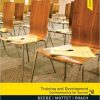
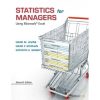


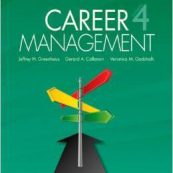
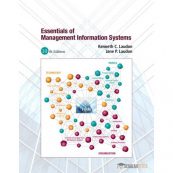
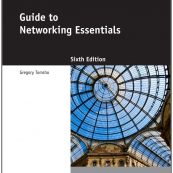
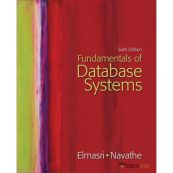

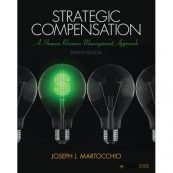
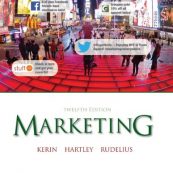
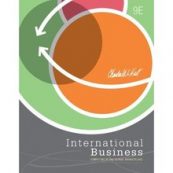
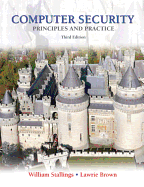
Reviews
There are no reviews yet.